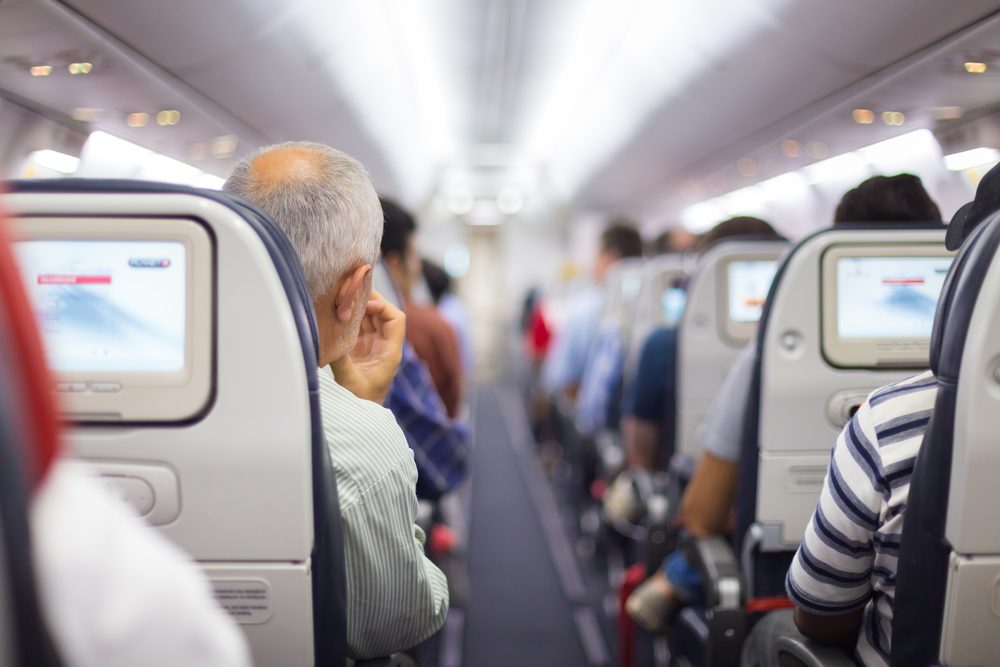How to transform even the most uncomfortable middle seat into your personal sleep sanctuary
The excitement of travel often comes with a significant challenge: getting quality sleep at 35,000 feet. From the persistent drone of engines to the perpetual discomfort of economy seats, airplanes seem designed to keep passengers wide awake. Yet seasoned travelers and flight attendants have mastered the art of in-flight slumber through methods that work even in the most challenging conditions.
“I used to arrive at destinations completely exhausted,” admits a frequent business traveler from Seattle. “Now I can sleep on almost any flight—even the short ones—and it’s completely transformed my travel experience.”
For both vacation travelers hoping to maximize their time away and business travelers needing to perform at their best upon landing, mastering airplane sleep isn’t just a comfort issue—it’s essential for making the most of your trip. The good news? With the right approach, quality rest is possible even in the most basic economy seat.
Why airplane sleep feels nearly impossible
Understanding why sleep proves so elusive at altitude helps explain why standard sleep strategies often fail during air travel. Aircraft cabins create a perfect storm of sleep disruptors that your body must overcome.
The cabin pressure and reduced oxygen levels at cruising altitude (equivalent to being at 6,000-8,000 feet elevation) affect your body’s natural sleep mechanisms. This lower oxygen saturation can cause subtle respiratory changes that interrupt deep sleep phases, even when you feel drowsy.
Then there’s the physical discomfort factor. Economy seats provide approximately 30-32 inches of pitch (the distance between seats), well below the 36-38 inches most people need for true comfort. This spatial constraint forces your body into unnatural positions that trigger discomfort signals, preventing the physical relaxation necessary for deep sleep.
The cabin environment itself presents additional challenges. Humidity levels in aircraft typically hover around 20% (compared to the 40-60% found in comfortable homes), leading to dehydration that disrupts sleep quality. Meanwhile, cabin temperatures fluctuate significantly, with some areas experiencing drafts while others become uncomfortably warm.
Noise levels in cabins average 85 decibels during cruise—equivalent to standing next to a busy highway—creating a constant auditory barrier to sleep. And the irregular light exposure from window shades, reading lights, and entertainment screens disrupts your body’s natural melatonin production, the hormone critical for sleep initiation.
The perfect pre-flight preparation
What you do before boarding significantly impacts your ability to sleep once airborne. The most successful airplane sleepers begin their preparation 24-48 hours before takeoff.
Adjusting your sleep schedule gradually toward your destination’s time zone helps minimize jet lag disruption. For eastbound flights (which typically cause more severe jet lag), try going to bed and waking up one hour earlier each day for several days before departure. For westbound flights, shift your schedule later by the same increment.
Hydration strategy proves equally important but requires balance. Begin increasing water intake 48 hours before flying while simultaneously reducing caffeine and alcohol consumption. On flight day, maintain steady hydration but taper liquid intake in the two hours before boarding to minimize mid-flight bathroom trips that would interrupt sleep.
Exercise timing can also enhance sleep quality. A moderate workout 4-6 hours before your flight helps tire your body physically without leaving you too energized at boarding time. The temporary increase in core temperature from exercise, followed by its natural drop, aligns perfectly with sleep initiation when timed correctly.
Your final meal before flying deserves careful consideration. Research indicates that high-carbohydrate, moderate-fat meals containing sleep-promoting foods can improve in-flight rest. Consider options like:
Whole grain pasta with olive oil and vegetables Brown rice with avocado and sweet potato Oatmeal with banana and a small amount of nut butter Turkey sandwich on whole grain bread
These combinations contain natural sleep promoters like tryptophan, magnesium, and complex carbohydrates that help induce drowsiness without digestive discomfort.
The 8 in-flight techniques that transform your sleep quality
- The perfect neck pillow technique Not all travel pillows deliver equal results. Research shows that neck pillows with frontal support prevent the head-bob phenomenon that repeatedly wakes sleepers. Look for designs that provide 360-degree support rather than just the traditional U-shape. The optimal positioning involves placing the larger portion of the pillow under your chin rather than behind your neck. This counterintuitive approach prevents your head from falling forward—the most common sleep disruptor in upright positions. For side sleepers, combine the neck pillow with a window seat and small rolled sweater between your head and the cabin wall. This creates a stable triangle of support that mimics side-sleeping positions in bed.
- The strategic seat selection system Your seat choice dramatically impacts sleep quality. Window seats provide a crucial wall to lean against and eliminate disruptions from seatmates needing to access the aisle. On overnight flights, rows 10-15 typically offer the best sleep environment—far enough from high-traffic galleys and lavatories yet not so far back that you experience increased engine noise and turbulence. When possible, choose seats on the left side of the aircraft. Research from sleep specialists suggests this side typically experiences slightly less turbulence on most routes due to prevailing wind patterns and right-turning flight paths. Emergency exit rows offer additional legroom but come with trade-offs: the seats often don’t recline, and the doors can create cold drafts. For maximum sleep potential, regular window seats with full recline capability typically outperform exit rows.
- The body temperature regulation method Core temperature drops naturally during sleep onset, but airplane cabins challenge this process with unpredictable temperature fluctuations. The layering approach addresses this problem effectively. Start with a moisture-wicking base layer that prevents the clamminess that often disrupts sleep. Add a middle insulating layer like a light sweater or long-sleeve shirt that can be easily removed. Top with a large scarf or light blanket that can cover your torso while sleeping. The feet particularly affect sleep quality, with cold feet often preventing sleep onset while overheated feet can cause awakening. Compression socks with moisture-wicking properties address both concerns while reducing swelling during long flights.
- The light management protocol Light exposure powerfully affects your circadian rhythm and ability to sleep on command. Blue light from screens and cabin lighting can suppress melatonin production for up to 90 minutes after exposure. Begin by using blue-light blocking glasses 2-3 hours before your desired sleep time. These specialized glasses filter the wavelengths most responsible for melatonin suppression. If you must use screens, activate night mode settings that reduce blue light emission. For optimal results, pair high-quality eye masks that create complete darkness with strategic light exposure. When trying to adapt to a new time zone, brief exposure to bright light at specific times can help reset your internal clock. Flight attendants often use light therapy apps that provide guidance on when to seek or avoid light based on your travel direction and destination.
- The noise cancellation hierarchy Aircraft noise operates at multiple frequencies that require different blocking strategies. The most effective approach combines passive and active noise reduction methods. High-quality foam earplugs address high-frequency noises and can reduce overall noise by 20-30 decibels when properly inserted. For deeper noise reduction, add active noise-canceling headphones that counteract lower-frequency sounds like engine drone. For maximum effectiveness, play specifically designed “pink noise” through your headphones. Unlike white noise, pink noise contains sound frequencies that better mask the typical disturbances on aircraft while promoting deeper sleep phases.
- The circulation-boosting position technique Poor circulation during flight not only increases discomfort but also raises health risks and impairs sleep quality. The ideal sleeping position addresses both comfort and circulation concerns. Start by slightly elevating your feet using your carry-on bag or a packable foot hammock that attaches to your tray table. This slight elevation promotes venous return from the legs, reducing swelling and improving overall comfort. For your upper body, the “flight attendant lean” provides superior comfort in limited space: recline your seat slightly, then tilt your torso toward the window rather than straight back. This diagonal position maximizes the available space while reducing pressure on your lower back. Complete the position by keeping your neck in neutral alignment using your properly positioned travel pillow, avoiding the muscle strain that comes from bent-neck positions.
- The sleep supplement strategy Certain natural supplements can help initiate and maintain sleep during flights without the grogginess of prescription sleep aids. Timing these supplements correctly maximizes their effectiveness. Melatonin, the most researched sleep supplement for travel, works best when taken 30-60 minutes before your desired sleep time. For eastbound flights, 0.5-3mg typically proves sufficient without causing next-day drowsiness. Magnesium glycinate, another evidence-backed option, helps relax muscles and promote deeper sleep. A 200-300mg dose before flying can improve sleep quality without digestive discomfort sometimes associated with other forms of magnesium. L-theanine, an amino acid found in tea, promotes relaxation without sedation. A 200mg supplement can ease pre-sleep anxiety without affecting alertness upon arrival. Always consult healthcare providers before trying new supplements, especially when combining multiple options or if you have existing health conditions.
- The hydration balance technique Proper hydration significantly impacts sleep quality, but requires strategic management during flights. The 4-2-1 approach optimizes hydration without creating sleep-disrupting bathroom needs. Start by drinking 16 ounces of water for every hour spent at the airport before your flight. Once aboard, transition to consuming 8 ounces every two hours during waking periods. In the two hours before your planned sleep window, reduce intake to small sips only when needed. Avoid beverages served in plastic cups, which often smell slightly of chemicals that can subtly disrupt sleep. Instead, request canned or bottled water that hasn’t been poured into plastic. When hydrating, avoid both alcohol and caffeine, which worsen the dehydrating effects of air travel while disrupting sleep architecture. If you must consume these beverages, allow at least 4-6 hours before your planned sleep period.
The post-sleep recovery routine
How you handle the transition from airplane sleep to arrival activities significantly impacts your alertness and adjustment to new time zones. A strategic approach makes the difference between feeling refreshed or foggy upon landing.
Begin with gentle stretching in your seat during the last 20 minutes of sleep. Simple neck rolls, shoulder shrugs, and ankle rotations reactivate circulation without fully waking you. This preparation phase helps your body transition gradually from sleep to wakefulness.
When fully awake, rehydrate with room temperature water rather than cold. Research suggests that room temperature fluids are absorbed more efficiently by the body and cause less digestive discomfort when breaking a fasting period.
If arriving in daylight hours, seek natural sunlight as soon as possible after landing. Exposure to natural light for 15-30 minutes helps reset your circadian rhythm to the new time zone and improves alertness. For night arrivals, limit light exposure and maintain a dark, sleep-conducive environment instead.
For flights crossing multiple time zones, consider the “two-day rule” used by flight crews worldwide: for trips of two days or less, stay on your home time zone schedule to avoid unnecessary adjustment. For longer trips, immediately adopt the local schedule upon arrival to minimize jet lag duration.
When to seek additional help
While these techniques work for most travelers, certain situations may require additional support. Consider consulting a sleep specialist or travel medicine physician if:
You experience severe insomnia that persists despite trying these methods You have existing sleep disorders like sleep apnea that complicate travel rest You need to perform high-stakes activities immediately upon arrival You have circulation issues or other medical concerns that affect travel safety
Travel medicine specialists can provide personalized recommendations, including appropriate use of prescription sleep aids when necessary. Many now offer pre-travel consultations specifically focused on sleep optimization during long journeys.
With these advanced techniques in your travel arsenal, even the most challenging flight can become an opportunity for rest rather than an exercise in endurance. By understanding the science behind air travel’s unique sleep challenges and implementing targeted solutions, you can arrive at your destination refreshed, alert, and ready to enjoy whatever awaits you.











